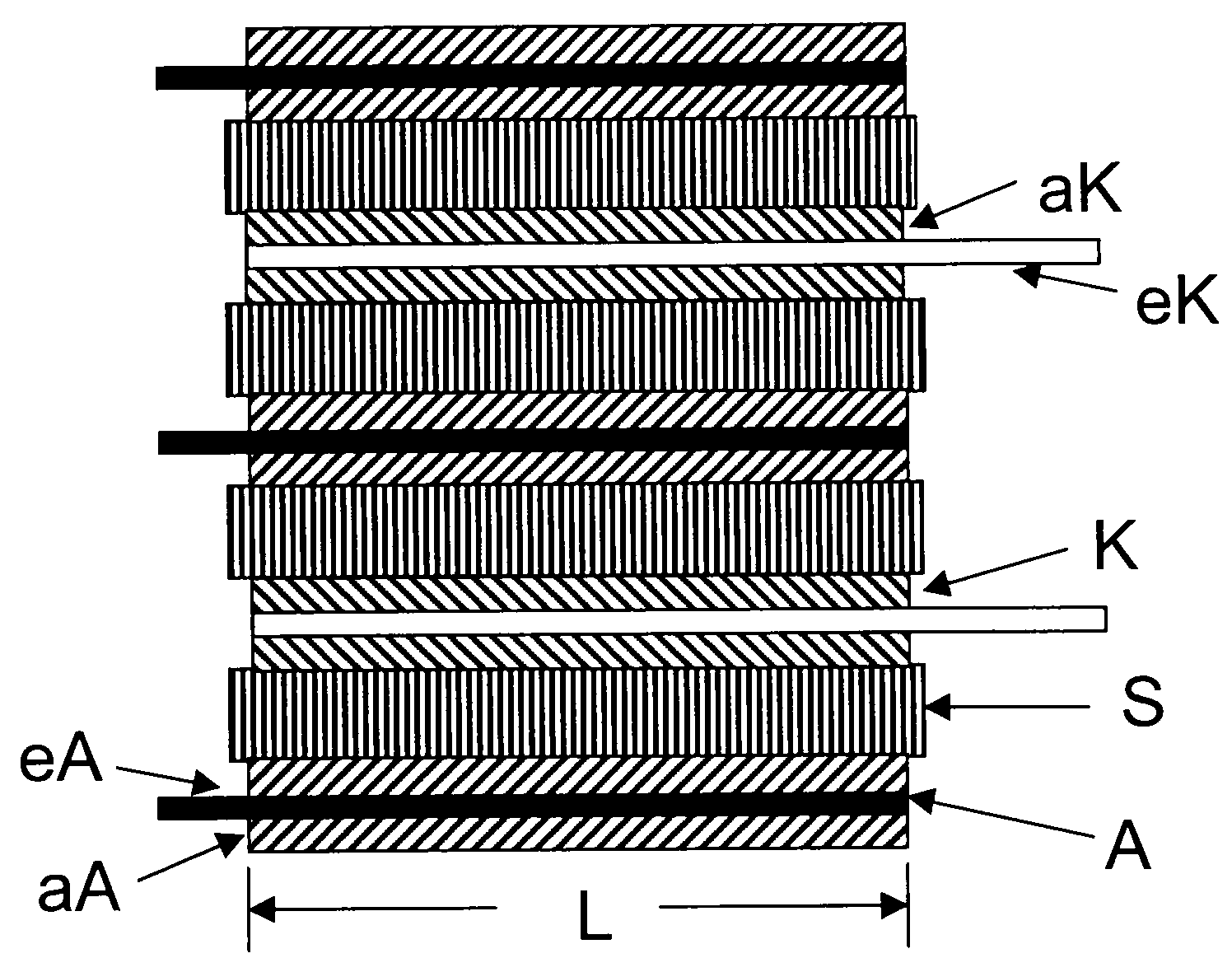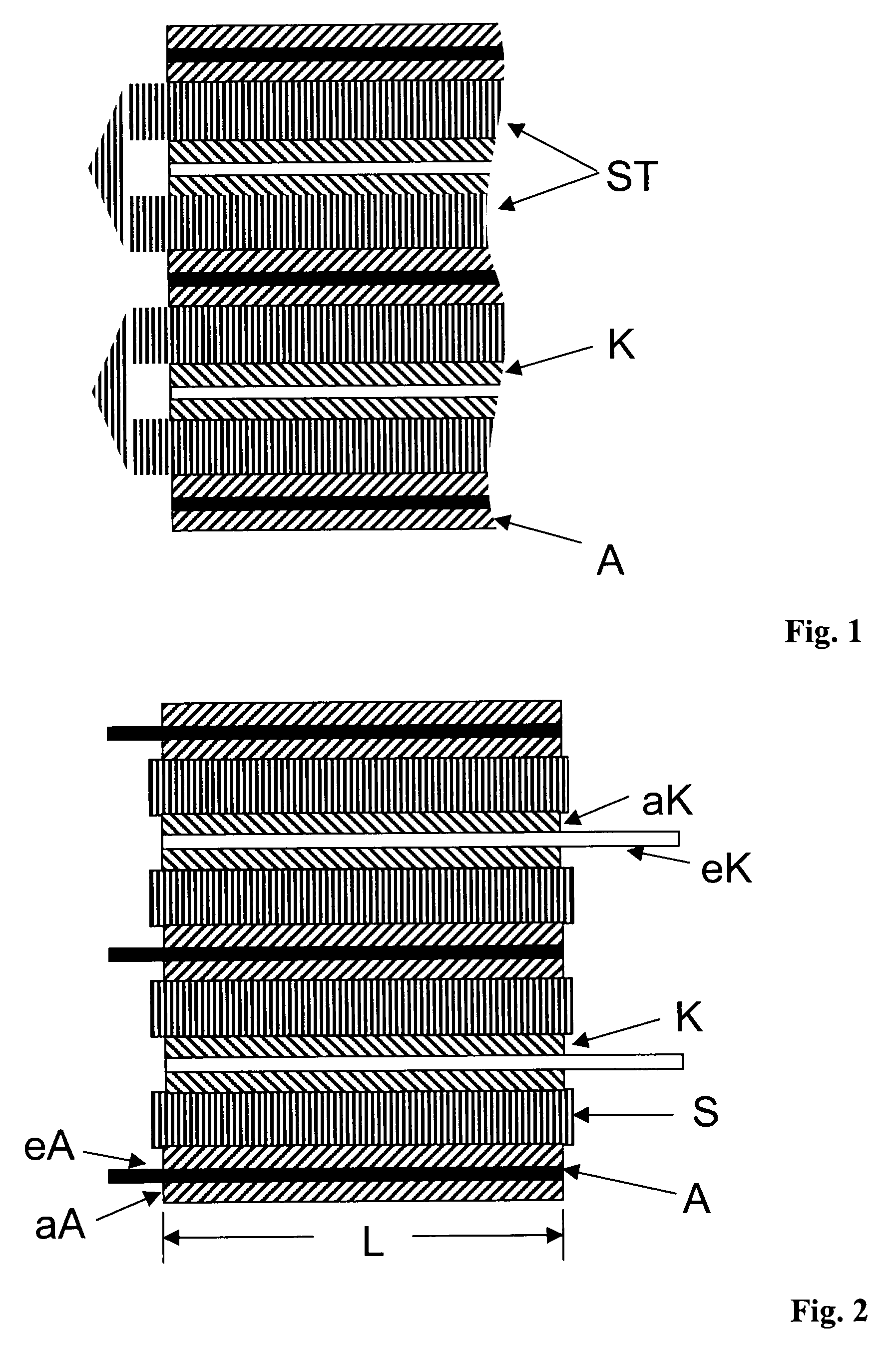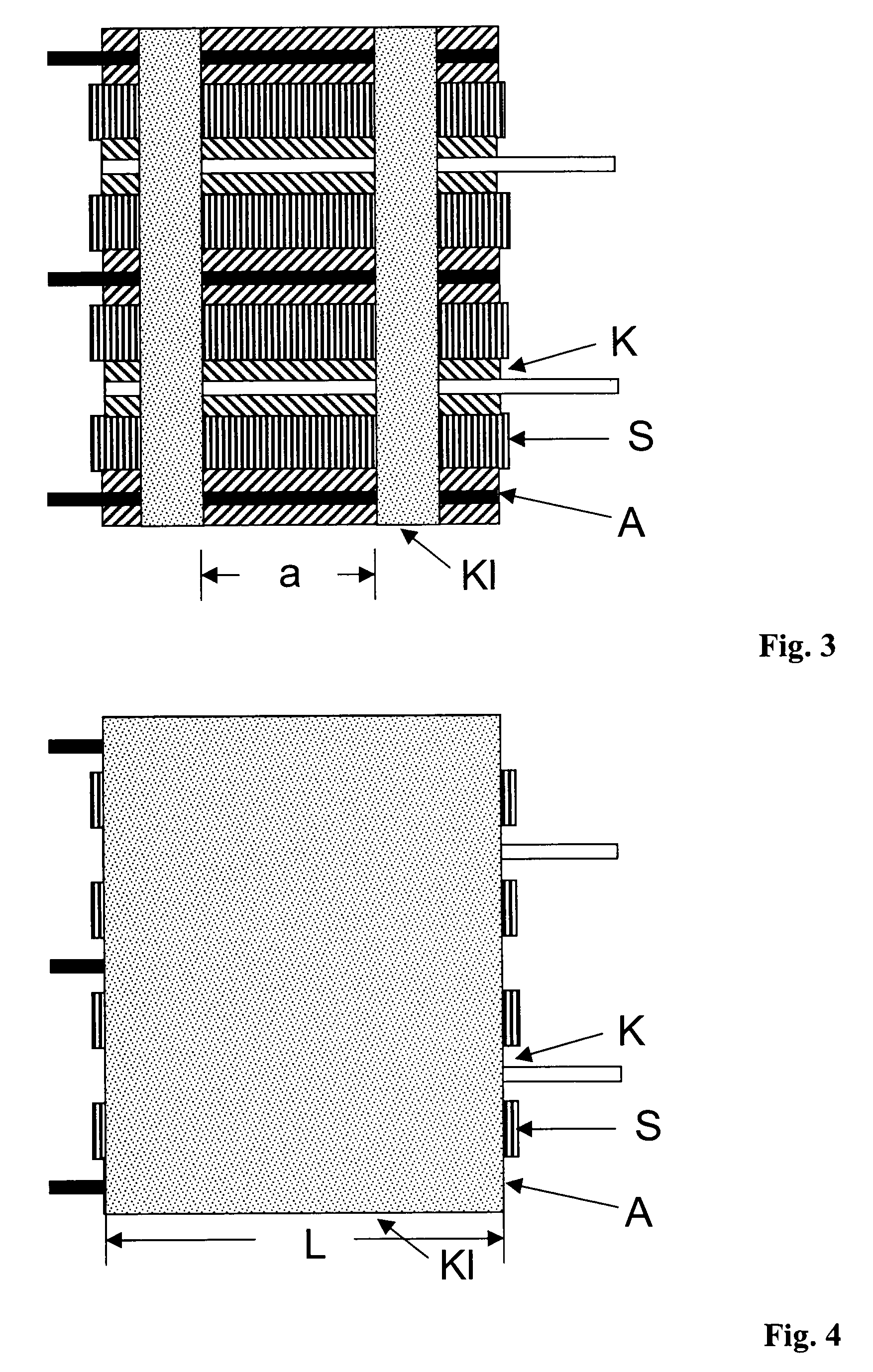Stacks Of Separators And Electrodes Alternately Stacked One On Top Of The Other And Fixed For Li Storage Batteries
a technology of separators and electrodes, which is applied in the direction of secondary cell details, sustainable manufacturing/processing, paper/cardboard containers, etc., can solve the problems of thermal destruction of separators, short circuit between electrodes, and growing potential risk of stored energy being released in an uncontrolled manner
- Summary
- Abstract
- Description
- Claims
- Application Information
AI Technical Summary
Benefits of technology
Problems solved by technology
Method used
Image
Examples
example 1
Stack with Hotmelt Adhesive, Adhesively Bonded Over Lines
[0071]A separator S240 P25 (Degussa AG, Germany) having the dimensions 72 mm×126 mm is placed on an electrode A (anode) having the dimensions 70 mm×131 mm (including 7 mm Cu edge), according to FIG. 2 (Enax Inc., Japan), so that the separator projects by 1 mm on all sides beyond the electrodes in the region of the copper foil coated with active material. The opposite electrode having the dimensions 65 mm×129 mm (including 9 mm of bare aluminum foil), (cathode; Enax Inc., Japan) is then placed on top, it being necessary to ensure that the separator completely covers on all sides the region of the aluminum foil coated with active material. The electrodes are arranged in such a way that the bare aluminum foils project from the stack beyond the narrow sides of the cathodes on one side of the stack, and the bare copper foils project beyond the narrow sides of the anodes on the opposite side of the stack. Further layers of electrode...
example 2
Stack with UV-Crosslinking Acrylate Adhesive, Adhesively Bonded Over Lines
[0076]A separator S240 P25 having the dimensions 72 mm×126 mm (Degussa AG, Germany) is placed on an electrode A (anode) having the dimensions 70 mm×131 mm (including 7 mm of uncoated copper on the narrow side), according to FIG. 2 (Enax Inc., Japan), so that the separator projects by 1 mm on all sides beyond the electrodes in the region of the copper foil coated with active material. The opposite electrode having the dimensions 65 mm×129 mm (including 9 mm of bare aluminum foil), (cathode; Enax Inc., Japan) is then placed on top, it being necessary to ensure that the separator completely covers on all sides the region of the aluminum foil coated with active material. The electrodes are arranged in such a way that the bare aluminum foils project from the stack beyond the narrow sides of the cathodes on one side of the stack, and the bare copper foils project beyond the narrow sides of the anodes on the opposite...
example 3
Stack with UV-Crosslinking Acrylate Adhesive, Adhesively Bonded Over the Whole Lateral Area
[0080]A separator S240 P25 (Degussa AG, Germany) having the dimensions 72 mm×126 mm is placed on an electrode A (anode) having the dimensions 70 mm×131 mm (including 7 mm Cu edge), according to FIG. 2 (Enax Inc., Japan), so that the separator projects by 1 mm on all sides beyond the electrodes in the region of the copper foil coated with active material. The opposite electrode having the dimensions 65 mm×129 mm (including 9 mm of bare aluminum foil), (cathode; Enax Inc., Japan) is then placed on top, it being necessary to ensure that the separator completely covers on all sides the region of the aluminum foil coated with active material. The electrodes are arranged in such a way that the bare aluminum foils project from the stack beyond the narrow sides of the cathodes on one side of the stack, and the bare copper foils project beyond the narrow sides of the anodes on the opposite side of the ...
PUM
| Property | Measurement | Unit |
|---|---|---|
| width | aaaaa | aaaaa |
| width | aaaaa | aaaaa |
| distance | aaaaa | aaaaa |
Abstract
Description
Claims
Application Information
 Login to View More
Login to View More - R&D
- Intellectual Property
- Life Sciences
- Materials
- Tech Scout
- Unparalleled Data Quality
- Higher Quality Content
- 60% Fewer Hallucinations
Browse by: Latest US Patents, China's latest patents, Technical Efficacy Thesaurus, Application Domain, Technology Topic, Popular Technical Reports.
© 2025 PatSnap. All rights reserved.Legal|Privacy policy|Modern Slavery Act Transparency Statement|Sitemap|About US| Contact US: help@patsnap.com



